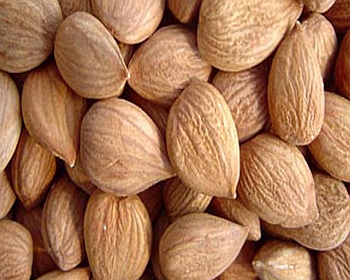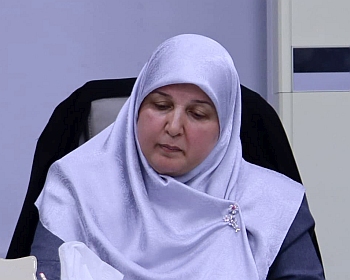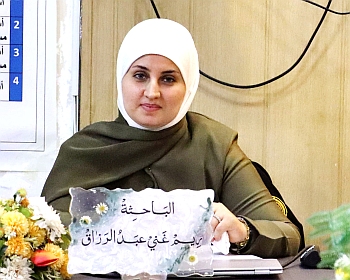ناقش قسم علوم الحياة في كلية التربية للعلوم الصرفة (ابن الهيثم) اطروحة الدكتوراه الموسومة ” بعض التأثيرات المناعية لبذور المشمش ” للطالب ” حيدر جاسم محمد مطر ” التي انجزها باشراف التدريسية في القسم ” أ.د. زهراء حسين ” .
هدفت هذه الدراسة الى تحضير المستخلص الكحولي لبذور نبات المشمش العراقي Prunus armeniaca L. مع تحديد المكونات الكيميائية للمستخلص بأستخدام جهاز كروموتوغرافيا الغاز Gas Chromatography – Mass Spectroscopy (GC-MS) . وقياس نشاط الكبح الجذري للمستخلص النباتي Free radical scarring activity بأختبار .DPPH كما تم تحديد الجرعة النصف قاتلة LD50 للمستخلص الكحولي لبذور نبات المشمش العراقي وكانت بتركيز 200 ملغم/مل ومن خلالها حضرت ثلاث مجاميع من المستخلص الكحولي (50، 100، 150 ملغم/مل) فضلا عن استعمال مجموعة عقار الانترفيرون الفا Interferon-alpha (INF-α) كسيطرة موجبة Positive control ومجموعة عقار السايكلوسبورين Cyclosporine كسيطرة سالبة Negative control ومجموعة الماء المقطر وتضمنت كل مجموعة 10 ذكور من الفأر الابيض.
قيمت التأثيرات البايولوجية والمناعية لبذور المشمش العراقي من خلال : قياس مضادات الاكسدة الكلوتاثيون Glutathione(GSH)، الكـــــتاليز Catalase (CAT)، المالون داي الديهايد Malondialdehyde (MDA)، أنزيمات وظائف الكبد Acid phosphatase ACP) و Alkaline phosphatase، amino tansferase (ALT) و Asparate transaminase (AST) في متجانس الكبد.
وقياس مستوى الحركيات الخلوية انترلوكين-1 بيتا Interlukin-1beta (IL-1beta)، انترلوكين-8 Interlukin-8 (IL-8)، انترلوكين-10 Interlukin-10 (IL-10) ، العامل النووي المفرز لسلسة كابا الحقيقية في الخلايا البائية النشطة Nuclear factor kappa-light chain enhancer of activated B cells (NFkB) في متجانس الطحال.
وقياس البروتين المنظم للموت المبرمج B-cell lymphoma 2 (Bcl2) والبروتين المثبط للورم Tumor protein (P53) في متجانس القولون.
توصلت الدراسة الى النتائج الاتية
-
احتواء المستخلص الكحولي لبذور المشمش العراقي على العديد من المركبات الكيميائية منها Cyclopentadecanone (61.05%) ، hexadecanoic acid (9.08%) ، Furancarboxaldehyde (6.89%) ، Formic acid (5.71%) 3-Deoxy-d-mannoic lactone (3.30%) ، 8-Octadecenoic acid (2.86%) و Oleic acid (2.72%).
-
اظهرت نتائج اختبار نشاط الكبح الجذري للمستخلص الكحولي ارتفاعا معنويا (2385.06±0.762 نانوغرام/مل ، 378.32±1.800 نانوغرام/مل و 154.45±0.365 نانوغرام/مل) على التوالي مقارنة بالسيطرة (فيتامين سي) (99.97±0.058 نانوغرام/مل).
-
وجود ارتفاع معنوي في مستوى انزيم الكتاليز للمستخلص الكحولي (2.45±0.31 نانومول/لتر و2.50±0.01 نانومول/لتر و2.50±0.02 نانومول/لتر) على التوالي مقارنة مع مجموعة السيطرة (1.40±0.01 نانومول/لتر ) ومستوى الكلوتاثيون (53.97±0.93 نانومول/لتر،56.17±0.71 نانومول/لتر و 56.54±1.36 نانومول/لتر) على التوالي مقارنة مع مجموعة السيطرة (53.01±1.01 نانومول/لتر).
-
وجود أرتفاع معنوي في مستوى انزيم الفوسفاتيز الحامضي ACP (79.80±4.76 وحدة/لتر ، 77.00±2.21 وحدة/لتر و56.80±3.79 وحدة/لتر) على التوالي مقارنة مع مجموعة السيطرة (47.60±0.97 وحدة/لتر) وارتفاع معنوي في مستوى انزيم الفوسفاتيز القاعدي ALP (88.50±6.54 وحدة/لتر ، 137.10±5.30 وحدة لتر و113.70±3.95 وحدة/لتر) على التوالي مقارنة مع مجموعة السيطرة (82.90±3.21 وحدة/لتر) ومستوى انزيم ناقل امين الانين ALT (380.80±7.64 وحدة/لتر ، 599.80±10.03 وحدة/ لتر و721.70±7.87 وحدة/لتر) على التوالي مقارنة مع مجموعة السيطرة (222.20±6.16 وحدة/لتر) ومستوى انزيم ناقل امين الاسبارتيت AST (380.80±6.94 وحدة/لتر، 556.70±10.10 وحدة/لتر و675.50±10.58 وحدة/لتر) مقارنة مع مجموعة السيطرة (276.90±6.85 وحدة/لتر).
-
وجود ارتفاع معنوي في مستوى الحركيات الخلوية في متجانس الطحال للمجاميع المعاملة بالمستخلص الكحولي كان مستوى الحركي الخلوي انترلوكين-1 بيتا (215.2±33.1 بيكوغرام/مل، 329.8±36.6 بيكوغرام/مل و240.2±84.5 بيكوغرام/مل) على التوالي مقارنة مع مجموعة السيطرة (68.9±1.1 بيكوغرام/مل) ومستوى الحركي الخلوي انترلوكين-8 (55.70±0.65 بيكوغرام/مل، 159.60±75.59 بيكوغرام/مل و36.00±13.29 بيكوغرام/مل ) مقارنة مع مجموعة السيطرة (29.30±3.21 بيكوغرام/مل) ومستوى الحركي الخلوي انترلوكين-10 (159.60±12.00 بيكوغرام/مل، 221.6±80.1 بيكوغرام/مل و263.6±67.4 بيكوغرام/مل ) على التوالي مقارنة مع مجموعة السيطرة (57.80±43.40 بيكوغرام/مل) ومستوى الحركي الخلوي العامل النووي المفرز لسلسة كابا الحقيقية في الخلايا البائية النشطة NFkB (31.13±2.99 بيكوغرام/مل، 40.99±12.22 بيكوغرام/مل و 27.29±13.28 بيكوغرام/مل ) على التوالي مقارنة مع مجموعة السيطرة (17.57±4.54 بيكوغرام/مل).
سجلت نتائج التصبيغ الكيميائي المناعي النسجي لنسيج القولون للمجاميع المعاملة بالمستخلص الكحولي لبذور نبات المشمش العراقي نسبة للبروتين Bcl2 (25%، 50% و30% ) على التوالي مقارنة مع مجموعة السيطرة (20%) و البروتين P53 سجل نسبة (35% ، 25% و18% ) على التوالي مقارنة مع مجموعة السيطرة (15%).
وخلص الطالب الى التوصيات الاتية :
-
اجراء دراسات مماثلة بأستعمال المستخلص المائي لبذور المشمش العراقي ودراسة تأثيرها على فعالية الجهاز المناعي.
-
عزل المركبات التي ظهرت بتراكيز عالية في بذور نبات المشمش العراقي واجراء دراسات مماثلة عليها كل على حدا.
-
احتواء بذور نبات المشمش العراقي على مستوى عالي من المركب Cyclopentadecanone السامة والتي ممكن الاستفادة منها في الصناعات الدوائية وغيرها.
-
أجراء دراسات مماثلة بالاعتماد على التقنيات الحديثة الاخرى كاستعمال الواسمات CD او التعبير الجيني لبعض البروتينات او تعدد الاشكال الوراثي genetic polymorphism لاسيما على الحركي الخلوي NFkB الذي تأثر كثيرا بالمستخلص الكحولي.
-
أجراء دراسات على المستوى الخلوي يتضمن دراسة تأثير المستخلص الكحولي لبذور المشمش العراقي وبيان دوره في اليات الموت المبرمج من خلال دراسة بروتينات اخرى لها دور في ذلك.
Some Immunological effects of apricot seed
By Haidar J.Mohammed
Supervised byAsst.prof.Dr. Zahraa Hussein Mohammed
Aim of the study: apricot seeds were alcoholically extracted and their chemical components were studied by Gas Chromatography-Mass Spectrum technique (GC-MS) and the antioxidant effect. the following criteria:
1- Measuring the level of oxidative enzymes: catalase (CAT), glutathione (GSH) in the liver homogenate and measuring the level of lipid peroxide (MDA) in the liver homogenate. 2- Measuring the activity of liver function enzymes: alanine
aminotransferase (ALT), aspartate transporter (AST), alkaline phosphatase (ALP) and acid phosphatase (ACP). 3- Measuring the level of the following cytokines: cytokinetic Interleukin-1 beta (IL-1beta), cytokinetic Interleukin-1 (IL-8), cytokinetic Interleukin-10 (IL-10) and cytokinetic nuclear factor kappa-light chain enhancer of activated B cells (NFkB) in the spleen. 4- Immunohistochemistry (IHC) to detect the histological expression of B-cell Lymphoma-2 (BCL-2) and Tumor protein 53 (P53).
The current study aimed to prepare the alcoholic extract of the seeds of the Iraqi apricot plant, Prunusarmeniaca L., with the determination of the chemical components of the extract using Gas Chromatography – Mass Spectroscopy (GC-MS). The free radical scarring activity of the plant extract was measured by the DPPH test. The LD50 dose of alcoholic extract of the seeds of the Iraqi apricot plant was determined at a concentration of 200 mg/ml, through which three groups of alcoholic extract (50, 100, 150 mg/ml) were prepared, as well as Interferon-alpha (INF-α) group was used as positive control, cyclosporine group as negative control, and distilled water group, each group included 10 male white mice.
The biological and immunological effects of Iraqi apricot seeds were evaluated by: measuring the antioxidants glutathione (GSH), catalase (CAT), malondialdehyde (MDA), liver function enzymes, Acid phosphatase ACP, Alkaline phosphatase, Alkaline phosphatase, ALTaminferase (aminotranstansferase) and Aspar AST) in liver homogenates.
And the measurement of the level of interleukin-1beta (IL-1beta), interleukin-8 (IL-8) and interleukin-10 (IL-10) nuclear factor kappa-light chain enhancer of activated B cells (NFkB) ) in homogeneus spleen.
Measurement of apoptosis-regulating protein B-cell lymphoma 2 (Bcl2) and tumor suppressor protein (P53) in colon homogeneus.
The study reached the following results
The alcoholic extract of Iraqi apricot seeds contains many chemical compounds, including Cyclopentadecanone (61.05%), hexadecanoic acid (9.08%), Furancarboxaldehyde (6.89%) and Formic acid (5.71%) 3-Deoxy-d-mannoic lactone (3.30%). ), 8-Octadecenoic acid (2.86%) and Oleic acid (2.72%).
The results of the radical inhibition test of alcoholic extract showed a significant increase (2385.06±0.762 ng/ml, 378.32 ± 1.800 ng/ml and 154.45 ± 0.365 ng/ml) respectively compared to the control (Vitamin C) (99.97±0.058 ng/ml).
There was a significant increase in the level of catalase enzyme for the alcoholic extract (2.45 ± 0.31 nmol/l, 2.50 ± 0.01 nmol/l and 2.50 ± 0.02 nmol/l) respectively compared to the control group (1.40 ± 0.01 nmol/l) and the level of Glutathione (53.97 ± 0.93 nmol/l, 56.17 ± 0.71 nmol/l and 56.54 ± 1.36 nmol/l) respectively compared with the control group (53.01 ± 1.01 nmol/l).
There was a significant increase in the level of ACP acid phosphatase (79.80±4.76 units/l, 77.00±2.21 units/l and 56.80±3.79 units/l) respectively
compared to the control group (47.60±0.97 units/l) and a high Significant in enzyme level.Alkaline phosphatase ALP (88.50 ± 6.54 U/L, 137.10 ± 5.30 U/L and 113.70 ± 3.95 U/L) respectively compared with the control group (82.90 ± 3.21 U/L) and the level of ALT (380.80 ± 7.64) U/L and 599.80 ± 10.03 U/L and 721.70 ± 7.87 U/L) respectively compared with the control group (222.20 ± 6.16 U/L) and the level of aspartate aminotransferase enzyme AST (380.80 ± 6.94 U/L and 556.70 ±10.10 U/L and 675.50 ± 10.58 U/L) compared with the control group (276.90 ± 6.85 U/L).
There was a significant increase in the level of in the spleen homogenate of groups treated with alcoholic extract, the level of interleukin-1-beta was (215.2±33.1 pg/ml, 329.8±36.6 pg/ml and 240.2±84.5 pg/ml), respectively compared with that of the group treated with alcoholic extract. The control group (68.9 ± 1.1 pg/ml) and the cytokine level of IL-8 (55.70 ± 0.65 pg/ml and 159.60 ± 75.59 pg/ml and 36.00 ± 13.29 pg/ml) compared with the control group (29.30 ± 3.21 pg/ml) mL) and interleukin-10 (159.60 ± 12.00 pg/mL, 221.6 ± 80.1 pg/mL and 263.6 ± 67.4 pg/mL) respectively compared with the control group (57.80 ± 43.40 pg/mL) and NFkB cytokine level. (31.13 ± 2.99 pg/ml, 40.99 ± 12.22 pg/ml and 27.29 ± 13.28 pg/ml) respectively compared with the control group (17.57 ± 4.54 pg/ml).
The results of immunohistochemical staining of the colon tissue of groups treated with alcoholic extract of the seeds of the Iraqi apricot plant were recorded with a percentage of Bcl2 protein (25%, 50% and 30%), respectively, compared with the control group (20%) and the P53 protein was recorded (35% and 25%) and 18%), respectively, compared with the control group (15%). Conducting similar studies using the aqueous extract of Iraqi apricot seeds and studying its effect on the effectiveness of the immune system.
2- Isolating the compounds that appeared in high concentrations in the seeds of the Iraqi apricot plant and conducting similar studies on them separately.
3- The seeds of the Iraqi apricot plant contain a high level of the toxic compound Cyclopentadecanone, which can be used in the pharmaceutical and other industries.
4- Conducting similar studies based on other modern techniques such as the use of CD markers, the gene expression of some proteins, or genetic polymorphism, especially on NFkB, which was greatly affected by the alcoholic extract.
– Conducting studies at the cellular level, including studying the effect of the alcoholic extract of Iraqi apricot seeds and showing its role in the mechanisms of programmed death by studying other proteins that have a role in that.









